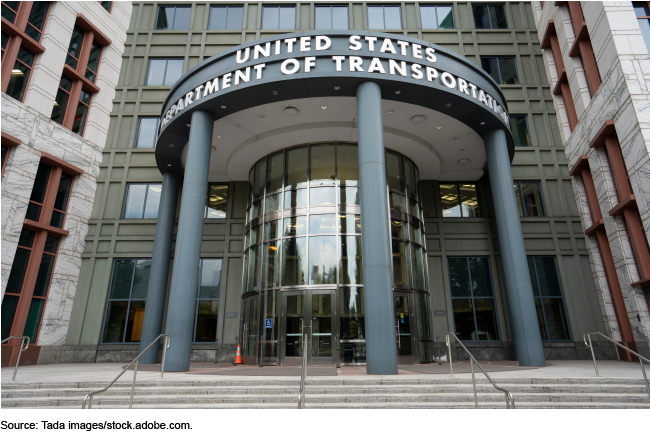Transportation Equity: DOT Could Improve Some Performance Goals to Better Assess Progress
Fast Facts
People rely on the nation's transportation system to access jobs and more. But the system doesn't serve everyone equally, e.g., those in remote areas.
The Department of Transportation has a new strategic goal to reduce inequities and established 14 performance goals to assess progress. One such goal is to increase transit grants for rural or tribal areas.
We compared these goals against selected federal performance practices and found consistency with some but not all. For example, some of these goals didn't have targets for the current or next year.
Our recommendations will help DOT better assess its progress toward reducing inequities.

Highlights
What GAO Found
The Department of Transportation (DOT) added a new strategic goal in its fiscal year 2022-2026 strategic plan that aims to reduce inequities across the transportation system. DOT also established 14 performance goals to assess progress toward this equity strategic goal. DOT defines equity as the consistent and fair treatment of all individuals, including those who belong to underserved communities, among other things. These equity performance goals relate to a variety of DOT's activities, such as its discretionary grant programs, contract awards, and community outreach efforts.
GAO found that DOT's equity performance goals are mostly consistent with six selected performance management practices (see figure). For example, each of the performance goals is consistent with the practices of describing linkage; identifying a goal leader; and being objective, quantifiable, and measurable.
Number of DOT's 14 Equity Performance Goals Consistent with Selected Performance Management Practices

However, some performance goals are inconsistent with the practices of identifying near-term targets; demonstrating clarity; and describing accuracy and reliability. For example, with regard to the practice of accuracy and reliability, DOT did not describe how it verified and validated data used to measure progress toward eight of its equity performance goals. Performance goals that are consistent with performance management practices could better position DOT, external stakeholders, and other decision-makers to assess progress toward DOT's equity strategic goal.
DOT is taking steps to assess and use information to manage its equity efforts. These steps, which are ongoing, include assessing the sufficiency of its current performance information and using early information from its performance reviews to guide some programmatic decision-making. For example, one of DOT's equity performance goals is to increase transit grants for rural or tribal areas. DOT officials stated that they are using information related to this performance goal to help improve outreach to those areas.
Why GAO Did This Study
DOT's mission is to deliver a transportation system that serves the American people. The Biden administration has issued a series of executive orders to help advance equity, and DOT added equity as a department-wide strategic goal in response.
House Report 117-99 includes a provision for GAO to examine DOT's equity-related efforts. This report examines (1) to what extent DOT's equity performance goals are consistent with selected federal performance management practices, and (2) how DOT assesses and uses information to manage its equity efforts.
GAO analyzed DOT performance management documents, such as its fiscal year 2025 annual performance plan, fiscal year 2023 performance report, fiscal year 2022-2026 strategic plan, and 2023 equity action plan update, and interviewed DOT officials. GAO compared information in these documents to performance management practices GAO selected from relevant federal statutes and guidance, and prior GAO work.
Recommendations
GAO is making three recommendations to DOT to ensure each equity performance goal is consistent with the performance management practices of identifying near-term targets, demonstrating clarity, and describing accuracy and reliability. DOT concurred with GAO's recommendations.
Recommendations for Executive Action
| Agency Affected | Recommendation | Status |
|---|---|---|
| Department of Transportation | The Secretary of Transportation should ensure each equity performance goal has a target or target milestone for the current and subsequent year in DOT's annual performance plan. (Recommendation 1) |
When we confirm what actions the agency has taken in response to this recommendation, we will provide updated information.
|
| Department of Transportation | The Secretary of Transportation should clarify the performance measures or associated methodology descriptions for the equity performance goals we identified as being inconsistent with the practice of clarity. (Recommendation 2) |
When we confirm what actions the agency has taken in response to this recommendation, we will provide updated information.
|
| Department of Transportation | The Secretary of Transportation should revise the descriptions of accuracy and reliability in DOT's annual performance report for the equity performance goals we identified as not having a sufficient description. (Recommendation 3) |
When we confirm what actions the agency has taken in response to this recommendation, we will provide updated information.
|
